Neil Armstrong was born on August 5, 1930, near Wapakoneta, Ohio, to Stephen Koenig Armstrong and Viola Louise Engel. He had a sister, June, and a brother, Dean, both younger than him. His father worked as a comptroller for Ohio state government, and the family moved around quite frequently, living in various places. Armstrong's love of flying was sparked at an early age when his father took his two-year-old son to the Cleveland Air Races. When he was five or six years old, he experienced his first airplane flight in Warren, Ohio.
Neil Armstrong (1930 to 2012)
BackNASA Astronaut and first men walking on the moon on July 21st. in 1969 with Apollo 11 module.
Neil A. Armstrong, was the first man to set foot on the moon. Born in Wapakoneta, Ohio, in 1930, he began his NASA career in Ohio. After serving as a naval aviator from 1949 to 1952, Armstrong joined the National Advisory Committee for Aeronautics (NACA) in 1955. For the next 17 years, he served as an engineer, test pilot, astronaut and administrator for NACA and later NASA.
As a research pilot at NASA's Flight Research Center in Edwards, California, he was a project pilot for many high-speed aircraft, such as the famous 4000 mph X-15, and flew more than 200 different aircraft models, including jets, rockets, helicopters and gliders. Armstrong was promoted to astronaut in 1962. He was assigned as command pilot for the Gemini 8 mission, which launched on March 16, 1966, and performed the first successful docking of two vehicles in space. As commander of Apollo 11, the first successful manned lunar landing mission, Armstrong earned the distinction of being the first man to land a spacecraft on the moon and the first to set foot on its surface.
Armstrong subsequently held the position of Deputy Associate Administrator for Aeronautics at NASA Headquarters in Washington, D.C. There he was responsible for coordinating and directing all NASA research and technology efforts related to spaceflight. From 1971-1979, he was a professor of aerospace engineering at the University of Cincinnati. From 1982-1992, Armstrong was chairman of Computing Technologies for Aviation, Inc. in Charlottesville, Va. He received a bachelor of science degree in aerospace engineering from Purdue University and a master of science degree in aerospace engineering from the University of Southern California. He has received honorary doctorates from several universities.
Armstrong has received awards from 17 countries. He has been honored with many special awards, including the President's Medal of Freedom, the Congressional Gold Medal, the Congressional Space Medal of Honor, the Explorers Club Medal, the Robert H. Goddard Memorial Trophy; the NASA Distinguished Service Medal; the Harmon International Aviation Trophy; the Royal Geographic Society's Gold Medal; the Federation Aeronautique Internationale's Gold Space Medal; the American Astronautical Society Flight Achievement Award; the Robert J. Collier Trophy; the AIAA Astronautics Award; the Octave Chanute Award; and the John J. Montgomery Award.
When he landed on the moon, he said, "That's one small step for man, one giant leap for mankind!" Neil Armstrong died Aug. 25, 2012, in Cincinnati after failing to recover from bypass surgery.
Military Service (1949)
Neil Armstrong developed a fascination for flying at an early age and earned his student pilot license at the age of 17. Armstrong began his studies in aeronautical engineering at Purdue University on a U.S. Navy scholarship. In 1949, he trained as a pilot in the Navy and served in the Korean War two years later. During that war, he flew 78 missions. In 1952, he returned to college. A few years later, Armstrong joined the National Advisory Committee for Aeronautics (NACA), which later became NASA. For this government agency, he worked as an engineer and as a test pilot. He tested many high-speed aircraft, including the X-15, which reached a top speed of 4,000 miles per hour.
Astronaut Program (1965)
Neil Armstrong began to settle down and married Janet Shearon in 1956. The couple had son Eric in 1957 and daughter Karen in 1959. The girl Karen died in 1962 from complications related to an inoperable brain tumor. Later, son Mark completed the family. Armstrong entered the astronaut program. In February 1965, Armstrong was named commander of the Gemini 5 mission, replacing Gordon Cooper. They went to Houston, Texas, and Armstrong became command pilot for his first mission, Gemini VIII. They landed in the Pacific Ocean nearly 11 hours into the mission and were later rescued by the U.S.S. Mason.
One of the key engineers of the Apollo program was Wernher von Braun. He was significantly involved in the Nazi V2 rockets during World War II.
First moon landing (1969)
Neil Armstrong experienced his finest hour in 1969. Together with Michael Collins and Edwin E. "Buzz" Aldrin, he was the commander of NASA's first manned mission to the moon. The astronauts launched into space on July 16, 1969. Together with Buzz Aldrin, he piloted the Lunar Module to the lunar surface on July 20, 1969. Collins remained in the command capsule and waited for the two astronauts to return.
At 10:56 p.m., Armstrong exited the lunar module, stepped onto the moon and made those famous words, "That's one small step for (a) man, one giant leap for mankind!" For a short time, they collected samples, conducted experiments and took photos, including their own footprints.
Ticker-Tape Parade (1969)
Returning on July 24, 1969, the Apollo 11 spacecraft landed in the Pacific Ocean. The three Apollo 11 astronauts were greeted with enthusiasm on the streets of New York City. They were honored in a ticker-tape parade. Neil Armstrong received numerous awards, including the Medal of Freedom and the Congressional Space Medal of Honor.
Later Live & Death (2012)
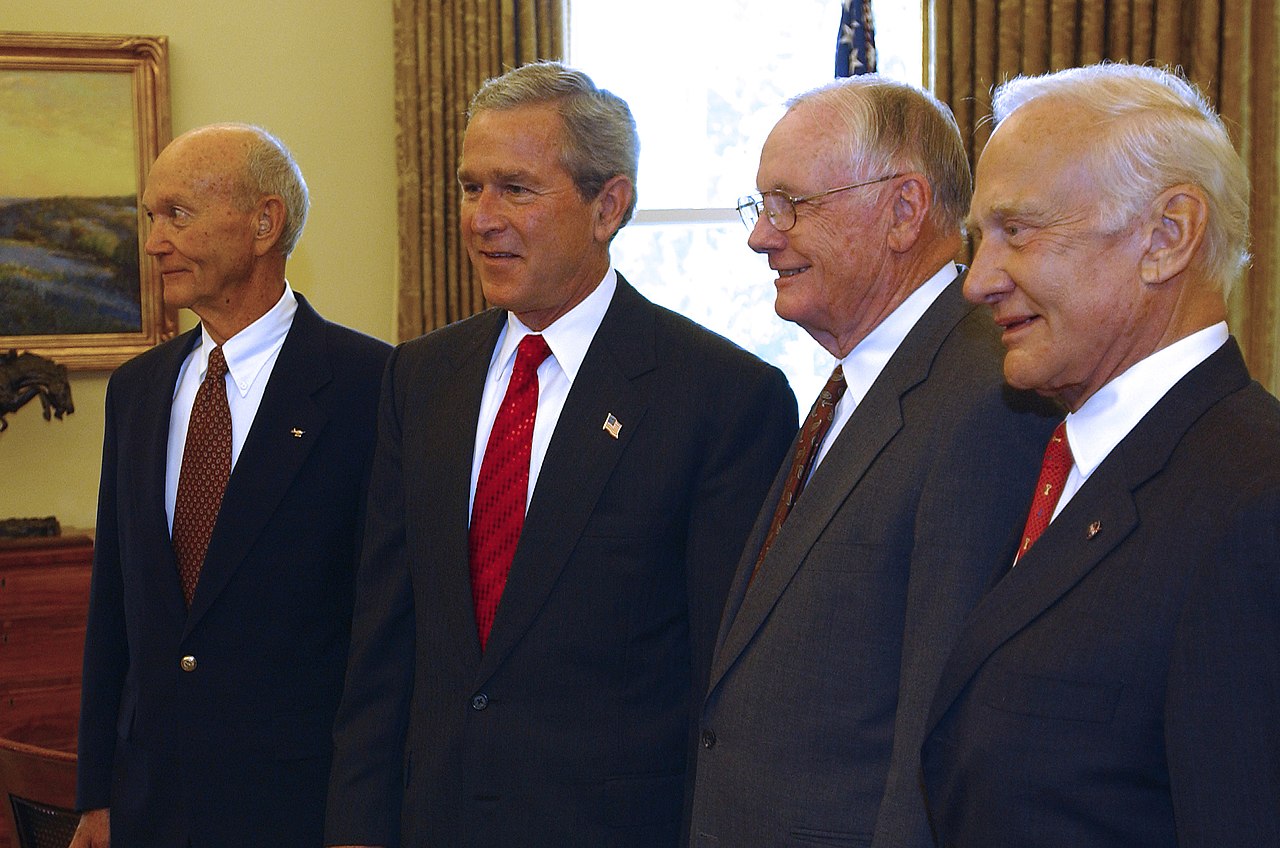 Celebrating with President George W. Bush and his co-astronauts the 35th anniversary of the Apollo 11 flight, July 21, 2004
Celebrating with President George W. Bush and his co-astronauts the 35th anniversary of the Apollo 11 flight, July 21, 2004
After leaving NASA, he joined the faculty of the University of Cincinnati as a professor of aerospace engineering. Neil Armstrong remained at the university for eight years. He served as the chairman of Computing Technologies for Aviation, Inc., from 1982 to 1992. He acted as vice chairman of the Presidential Commission on the space shuttle Challenger accident in 1986. The commission investigated the explosion of the Challenger on January 28, 1986, which took the lives of its crew.
His marriage with Janet Shearon ended in 1994 and he married afterwards Carol Knight. As a person Armstrong was rather shy and did not give too man interviews. He stayed associated with the NASA organization. He testified in Congress against President Barack Obama's decision to cancel the Constellation program, which included another mission to the moon. Obama wanted to encourage private companies to get involved in the space travel business and favoured rather unmanned moon mission to the moon.
Neil Armstrong underwent bypass surgery in 2012. Unfortunately, he did not recover and diet in August 25, in Cincinnati, Ohio, aged 82. Buzz Aldrin called Armstrong "a true American hero and the best pilot I ever knew", and said he was very sad that he could not celebrate the 50th anniversary of the Moon landing together in 2019.
Embedded Videos
First Man on the Moon: The Real Neil Armstrong | History Documentary
NASA Remembers Neil Armstrong
The Story Behind Neil Armstrong and first step on the moon - New Documentary 2015
Neil Armstrong: First Man on the Moon_Documentary by NASA on Apollo 11 (1969)
14 Secrets About The Apollo 11 Moon Landing
Hear Buzz Aldrin tell the story of the first moon landing
An Audience with Neil Armstrong (2011 interview)
How Did Neil Armstrong Really Die?
What if Apollo had crashed on the Moon ?
Comments & Conclusions
A truly humble hero
The astronauts of Apollo 11 did not know that Houston would have broken off communication with them if the launch from the moon back to the module had failed. The crew would have been stuck on the moon with no chance of being rescued because there was nothing NASA could do to save them. The Apollo missions had been a big risk for all astronauts with many unknown dangers. This is especially true for all astronauts who were on the moon. Neil Armstrong was a well-deserved pilot who proved his exceptional talent as a test pilot.
Over time, certain theories have been circulated that the lunar landings were all fake. But there are no really convincing arguments. Nevertheless, there is a small minority of people who believe this conspiracy theory.
Neil Armstrong was a very modest and quiet man, maybe a bit introverted in his way. His service to humanity cannot be overestimated.
Simultaneous events, periods or persons of Neil Armstrong
| Persons/Events/Periods | Subcategory | From | To | Reason of importance |
|---|

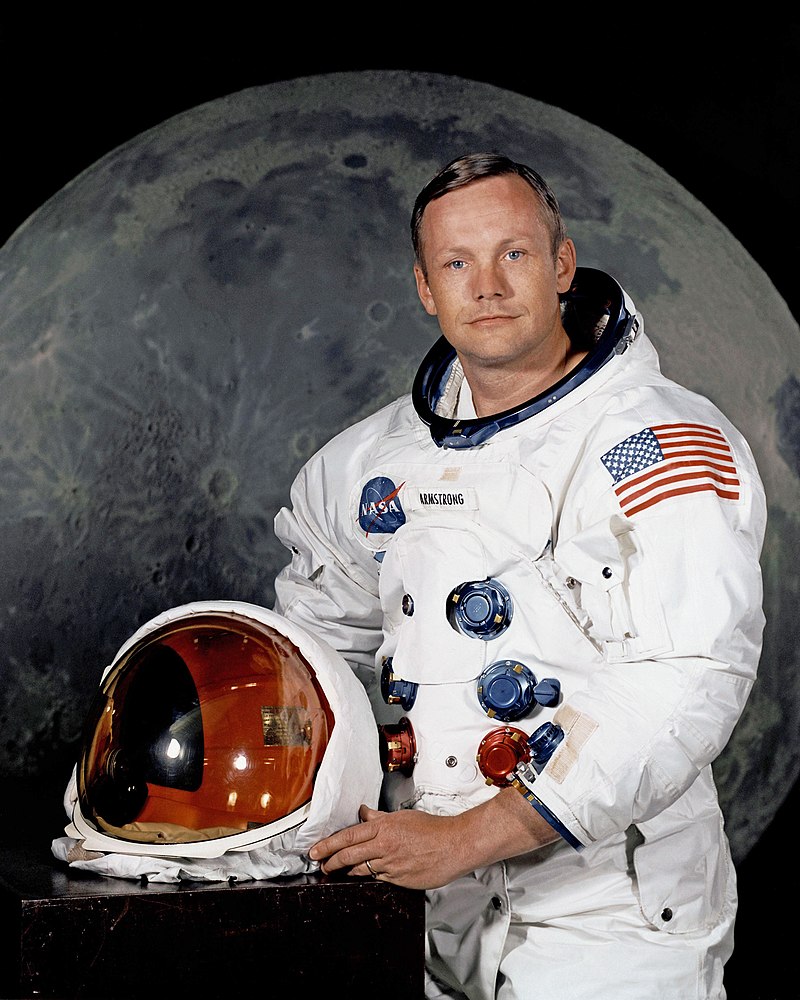

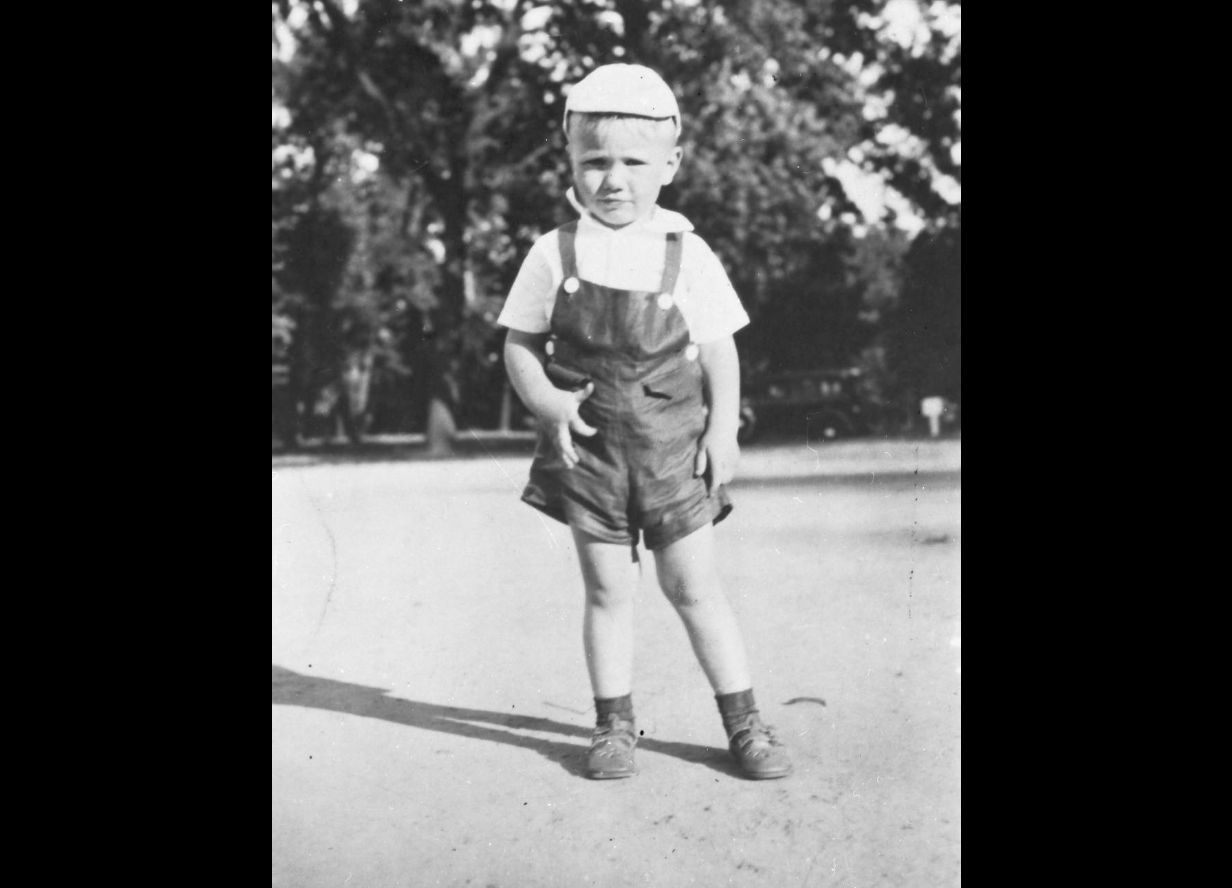

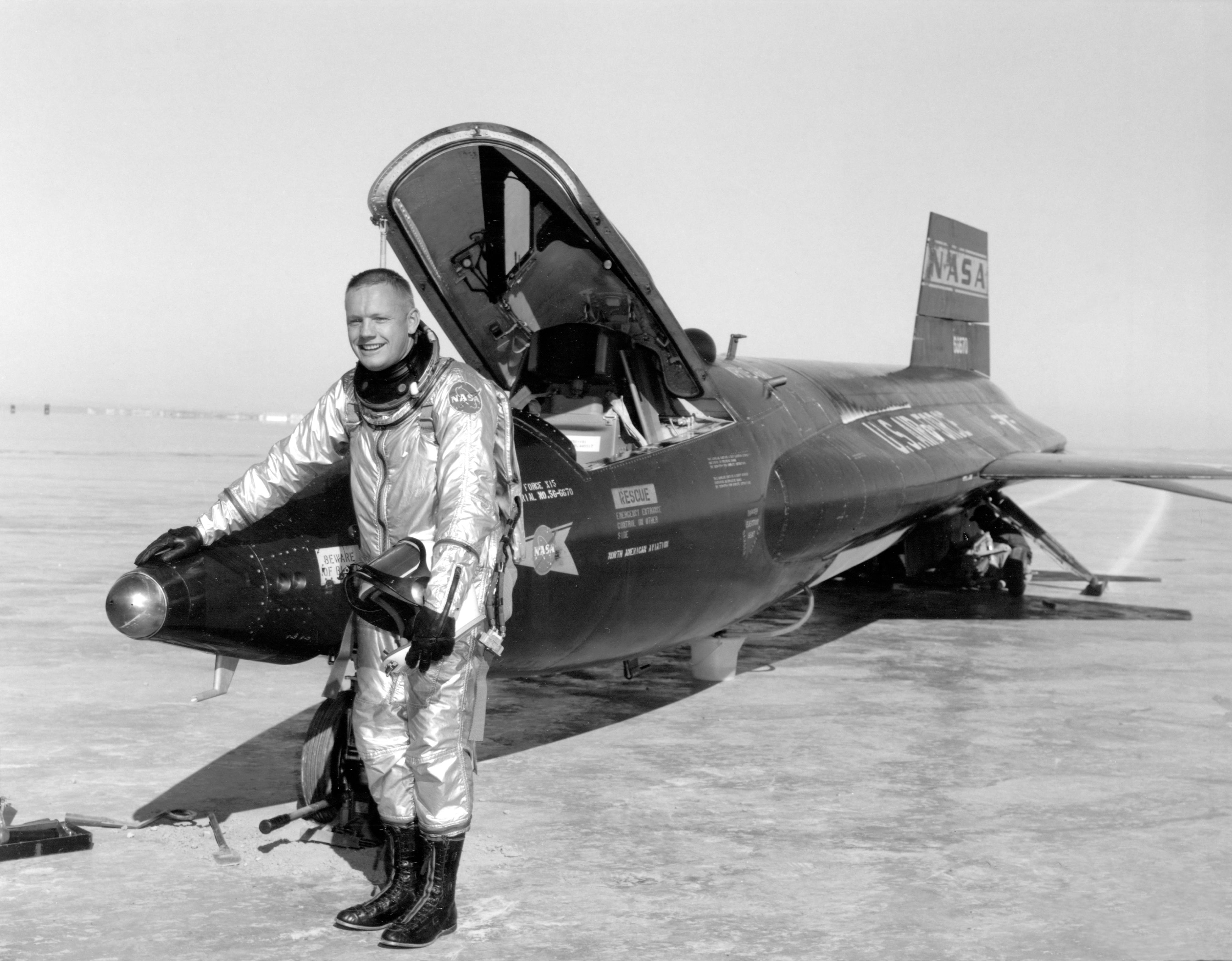
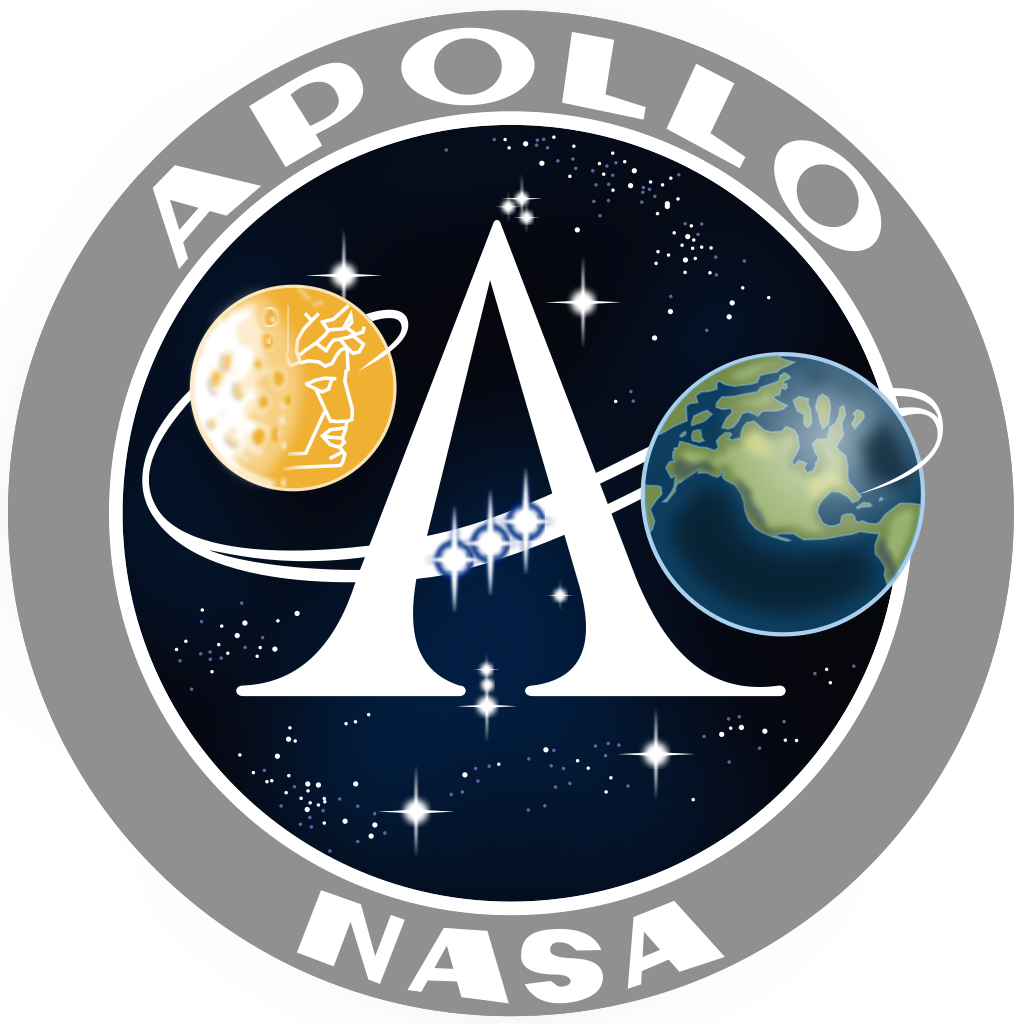
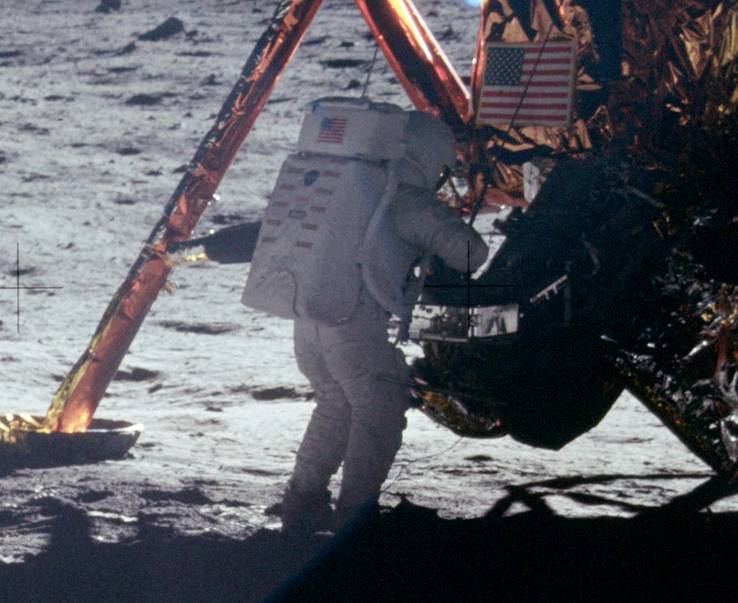
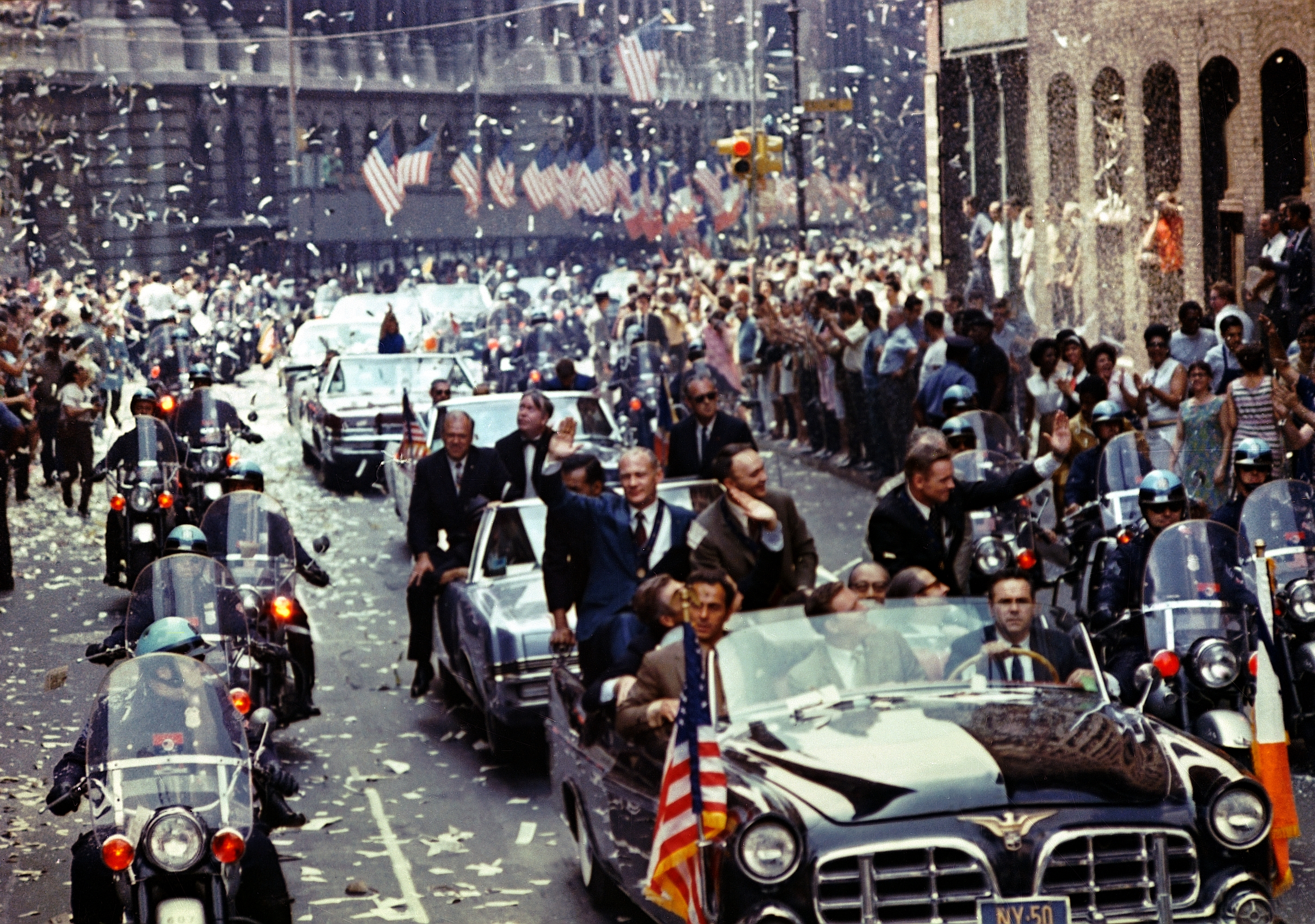

Comments
Links